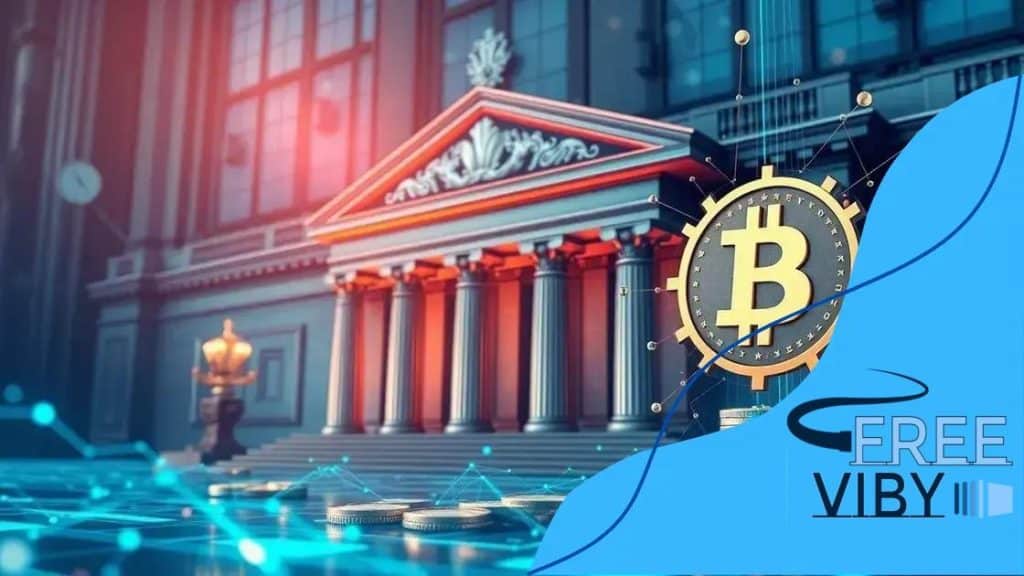Role of decentralized finance (DeFi) in traditional finance

Anúncios
The role of decentralized finance (DeFi) in traditional finance involves enhancing access to financial services and offering innovative products, while also presenting risks such as market volatility and smart contract vulnerabilities.
Role of decentralized finance (DeFi) in traditional finance is a hot topic that many are eager to understand. As finance evolves, have you wondered how DeFi could change your investing strategies or even the broader market?
Anúncios
Understanding decentralized finance (DeFi) basics
Understanding decentralized finance (DeFi) can seem daunting, but it doesn’t have to be. At its core, DeFi represents a shift in how we approach financial services, removing intermediaries like banks and enabling peer-to-peer transactions. This innovation opens up new avenues for managing assets, loans, and investments.
What is decentralized finance?
DeFi is an ecosystem of financial applications built on blockchain technology, primarily on Ethereum. These applications aim to recreate and improve traditional financial systems such as lending, borrowing, and trading but in a decentralized manner.
Key features of DeFi
- Transparency: All transactions are recorded on a public ledger, allowing anyone to verify activities.
- Accessibility: DeFi platforms are accessible to anyone with an internet connection, eliminating geographic and socioeconomic barriers.
- Censorship resistance: DeFi operates on decentralized networks, making it difficult for authorities to control or restrict access.
- Smart contracts: These self-executing contracts automate transactions based on pre-defined rules, reducing the need for trust.
This combination of features makes DeFi a powerful alternative to traditional finance. But it’s important to consider both the opportunities and the risks associated with using DeFi platforms.
Anúncios
How does it differ from traditional finance?
In traditional finance, banks act as intermediaries to facilitate transactions, often charging fees and requiring extensive documentation. In contrast, DeFi platforms utilize smart contracts to perform transactions automatically and efficiently, significantly reducing costs. This approach can dramatically democratize access to finance, allowing even small investors to participate in markets that were previously out of reach.
The growth of DeFi suggests a future where financial services are more democratized, fostering innovation and competition in the sector. Embracing this change could lead to unforeseen benefits, but it also requires a careful understanding of the mechanisms at play.
Key differences between DeFi and traditional finance
The key differences between DeFi and traditional finance highlight how these two systems operate fundamentally. Traditional finance relies heavily on intermediaries like banks and financial institutions, while DeFi removes these middlemen. This creates a more streamlined process, allowing for direct peer-to-peer transactions.
Control and Ownership
In traditional finance, banks control your assets and transactions. You must trust them with your money. However, in DeFi, you maintain complete control over your funds via smart contracts. This not only fosters personal responsibility but also empowers users to manage their investments directly.
Accessibility
- Wider access: DeFi platforms can be accessed by anyone with an internet connection, breaking down geographical barriers.
- Lower entry barriers: There are typically no minimum investments, making it easier for individuals to start investing.
- Reduced fees: By eliminating intermediaries, DeFi often reduces the costs associated with transactions.
- Financial inclusion: Those without access to traditional banking systems can participate in financial activities.
In traditional finance, people with poor credit histories may struggle to obtain loans. In contrast, DeFi does not require credit checks. This allows anyone to lend or borrow directly, further democratizing access to finance. Smart contracts execute transactions without the need for a public or private entity to oversee them.
Speed and Efficiency
Transactions in traditional finance can take days to process and settle. On the other hand, DeFi allows transactions to occur almost instantaneously, thanks to blockchain technology. This efficiency not only saves time but also enables more flexible trading options.
Overall, recognizing these key differences is essential for anyone considering participating in the rapidly evolving landscape of finance. The benefits of DeFi present exciting opportunities, but they also come with new challenges that users should be aware of.
Benefits of integrating DeFi into traditional finance

Integrating DeFi into traditional finance offers numerous benefits that can revolutionize financial services. By combining the strengths of both systems, users can enjoy greater flexibility and efficiency in managing their assets.
Enhanced Access to Financial Services
One of the most significant benefits is improved access to financial services. Traditional finance can be limited by location and regulatory requirements, while DeFi enables anyone with an internet connection to participate. This democratizes finance and provides opportunities for individuals who were previously excluded.
Lower Costs
- Reduced transaction fees: Without intermediaries, users can save money on transaction costs.
- Better interest rates: DeFi protocols can offer more competitive rates than traditional banks.
- Cost-effective cross-border transactions: DeFi facilitates cheaper international transfers compared to conventional banking systems.
- No hidden fees: Transparency in DeFi platforms means users know exactly what they are paying for.
This lower-cost model allows users to keep more of their returns while also encouraging innovation within the financial sector. Additionally, the rapid transaction speeds available in DeFi provide users with near-instant access to their funds, making financial management much more efficient.
Innovative Financial Products
DeFi brings a host of new financial products that were not possible in traditional finance. Users can access advanced functionalities like yield farming, liquidity pools, and synthetic assets, which can enhance their investment strategies. These tools empower individuals to customize their approaches to finance, leading to potentially higher returns.
Moreover, the integration allows for flexibility and the ability to create tailored financial solutions that meet unique needs. This innovation cycle promotes competition, driving down costs and improving service quality across the board.
Real-world applications of DeFi
Real-world applications of DeFi showcase how decentralized finance is transforming the financial landscape. By leveraging blockchain technology, individuals and businesses can access a wide range of services that challenge conventional banking methods.
Lending and Borrowing
DeFi platforms allow users to lend their cryptocurrencies to others and earn interest. On the other hand, borrowers can access funds without the need for credit checks. This system promotes financial inclusivity. It enables individuals from various backgrounds to get loans based on their cryptocurrency holdings rather than credit scores.
Decentralized Exchanges (DEX)
Decentralized exchanges are platforms that facilitate peer-to-peer trading of cryptocurrencies. Users retain control of their funds, which reduces the risks associated with centralized exchanges. DEXs operate on protocols that allow users to trade directly, ensuring that transactions are secure and transparent.
Yield Farming and Liquidity Pools
- Yield farming: This practice involves supplying assets to a DeFi platform to earn interest or rewards. Investors can maximize their returns by strategically shifting assets between platforms.
- Liquidity pools: Users provide liquidity to exchanges, enabling trading pairs. In return, they receive a portion of the transaction fees.
- Incentives: These systems encourage participation, creating a vibrant ecosystem that benefits all users.
The appeal of yield farming and liquidity pools lies in their ability to generate passive income. These applications allow users to put their assets to work rather than letting them sit idle.
Insurance and Risk Management
DeFi also extends to insurance, with platforms offering coverage for various risks. Users can insure their digital assets and receive compensation in case of losses due to hacks or failures. This innovative approach to insurance provides users with peace of mind, promoting trust in DeFi applications.
Overall, these real-world applications highlight the potential of DeFi to create a more efficient and inclusive financial ecosystem. As the technology continues to evolve, so too will the possibilities for its integration into everyday finance.
Challenges and risks of DeFi in established markets
The challenges and risks of DeFi in established markets are crucial to understand for anyone looking to navigate this dynamic landscape. While DeFi offers many benefits, it also presents unique problems that can impact users.
Market Volatility
One of the biggest risks in the DeFi space is market volatility. Cryptocurrency values can change rapidly, leading to significant losses. This volatility can affect users who invest without a proper risk management strategy. Sudden price drops can wipe out gains or even result in losses if leveraged positions are involved.
Smart Contract Vulnerabilities
DeFi platforms rely heavily on smart contracts, which are essentially automated agreements. While they provide efficiency, they are not immune to bugs or attacks. An exploited vulnerability in a smart contract can lead to substantial financial losses for users.
- Security risks: Malicious actors may exploit weaknesses in contracts, resulting in hacks.
- Lack of insurance: Most DeFi platforms do not offer insurance, leaving users unprotected against losses.
- Difficulty in audits: Given the complexity of many contracts, conducting thorough audits may be challenging.
Users must approach DeFi with caution, understanding that while the potential for high returns exists, so do the risks.
Regulatory Uncertainty
Another significant challenge facing DeFi is regulatory uncertainty. Many governments are still figuring out how to approach decentralized finance. This uncertainty can create hesitation for traditional investors and institutions.
Changes in regulations or the introduction of new laws can impact how DeFi platforms operate. Users may face risks if regulations lead to restrictions on certain services or even the outright banning of products.
Limited User Adoption
While DeFi has gained popularity, it still faces hurdles in user adoption. Many potential users are unfamiliar with how DeFi works, which can be a barrier to entry. In order for DeFi to thrive, education is necessary to inform users about its benefits and risks.
As the landscape evolves, addressing these challenges will be essential for the long-term sustainability of DeFi in established markets. Being aware of these risks allows users to make informed decisions and navigate the industry more effectively.
In conclusion, the role of decentralized finance (DeFi) in traditional finance is both exciting and complex. As we explored, DeFi presents numerous opportunities, including enhanced access to financial services and innovative products. However, it also comes with challenges, like market volatility and regulatory uncertainty. Understanding these aspects is crucial for anyone looking to navigate this growing landscape. With proper education and awareness, users can harness the benefits of DeFi while managing its risks effectively.
\n\n
\n
FAQ – Frequently Asked Questions about DeFi
What is decentralized finance (DeFi)?
DeFi refers to financial services that operate on blockchain technology, aiming to remove intermediaries and allow direct peer-to-peer transactions.
What are the main risks associated with DeFi?
Key risks include market volatility, smart contract vulnerabilities, and regulatory uncertainty that can impact users.
How does DeFi enhance accessibility to financial services?
DeFi platforms can be accessed by anyone with an internet connection, breaking down geographical barriers and providing services to those without traditional bank access.
What should I consider before engaging in DeFi?
It’s important to understand the potential risks and rewards, ensure security measures are in place, and become educated on how DeFi platforms operate.






